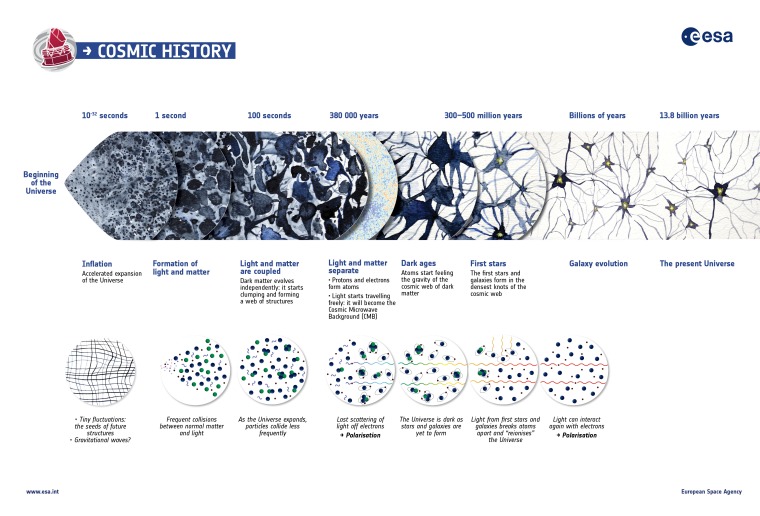What’s bigger and more powerful than the Large Hadron Collider at CERN? Why colliding galaxy clusters of course.
A cluster of galaxies consists of hundreds or even thousands of galaxies bound together by their mutual gravitation. Both dark matter and ordinary matter in and between galaxies is responsible for the gravitational field of a cluster. And typically there is about 5 times as much dark matter as ordinary matter. The main component of ordinary matter is hot intracluster gas; only a small percentage of the mass is locked up in stars.
One stunning example of dark matter detection is the Bullet Cluster. This is the canonical example found revealing dark matter separation from ordinary matter in a pair of clusters colliding and merging. The dark matter just passes right through, apparently unaffected by the collision. The hot gas (ordinary matter) is seen through its X-ray emission, since the gas is heated by collisions to of order 100 million degrees. The Chandra X-ray Observatory (satellite) provided these measurements.

Bullet Cluster. The blue color shows the distribution of dark matter, which passed through the collision without slowing down. The purple color shows the hot X-ray emitting gas. Image courtesy of Chandra X-ray Observatory
The distribution of matter overall in the Bullet Cluster or other clusters is traced by gravitational lensing effects; general relativity tells us that background galaxies will have their images displaced, distorted, and magnified as their light passes through a cluster on its way to Earth. The magnitude of these effects can be used to “weigh” the dark matter. These measurements are made with the Hubble Space Telescope.
In the Bullet Cluster the dark matter is displaced from the ordinary matter. The interpretation is that the ordinary matter from the two clusters, principally in the form of hot gas, is slowed by frictional, collisional processes as the clusters interact and form a larger single cluster of galaxies. Another six or so examples of galaxy clusters showing the displacement between the dark matter and the ordinary matter in gas and stars have been found to date.
Now, a team of astrophysicists based in the U.K. and Switzerland have examined 30 additional galaxy clusters with data from both Chandra and Hubble, and with redshifts typically 0.2 to 0.6. In aggregate there are 72 collisions in the 30 systems, since some have more than two subclusters. The offsets between the gas and dark matter are quite substantial, and in aggregate indicate the existence of dark matter in these clusters with over 7 standard deviations of statistical significance (probability of the null hypothesis of no dark matter is 1 in 30 trillion).
They then look at the possible drag force on the dark matter due to dark matter particles colliding with other dark matter particles. There are already much more severe constraints on ordinary matter – dark matter interactions from Earth-based laboratory measurements. But the dark matter mutual collision cross section could potentially be large enough to result in a drag. They measure the relative positions of hot gas, galaxies, and dark matter for all of the 72 subclusters.

From paper “The non-gravitational interactions of dark matter in colliding galaxy clusters” D. Harvey et al. 2015
The gas should and does lag the most, relative to the direction of the galaxies in a collision. If there is a dark matter drag, then dark matter should lag behind the positions of the stars. They find no lag of the dark matter average position, which allows them to place a new, tighter constraint on the mutual interaction cross-section for dark matter.
Their constraint is σ(DM)/m < 0.47 cm^2/g at 95% confidence level, where σ (sigma) is the cross-section and m is the mass of a single dark matter particle. This limit is over twice as tight as that previously obtained from the Bullet Cluster. And some dark matter models predict a cross section per unit mass of 0.6 cm^2/g, so these models are potentially ruled out by these new measurements.
In summary, using Nature’s massive particle colliders, the authors have found further highly significant evidence for the existence of dark matter in clusters of galaxies, and they have placed useful constraints on the dark matter self-interaction cross-section. Dark matter continues to be highly elusive.
Reference:
D. Harvey et al. 2015 “The non-gravitational interactions of dark matter in colliding galaxy clusters” http://arxiv.org/pdf/1503.07675v1.pdf


